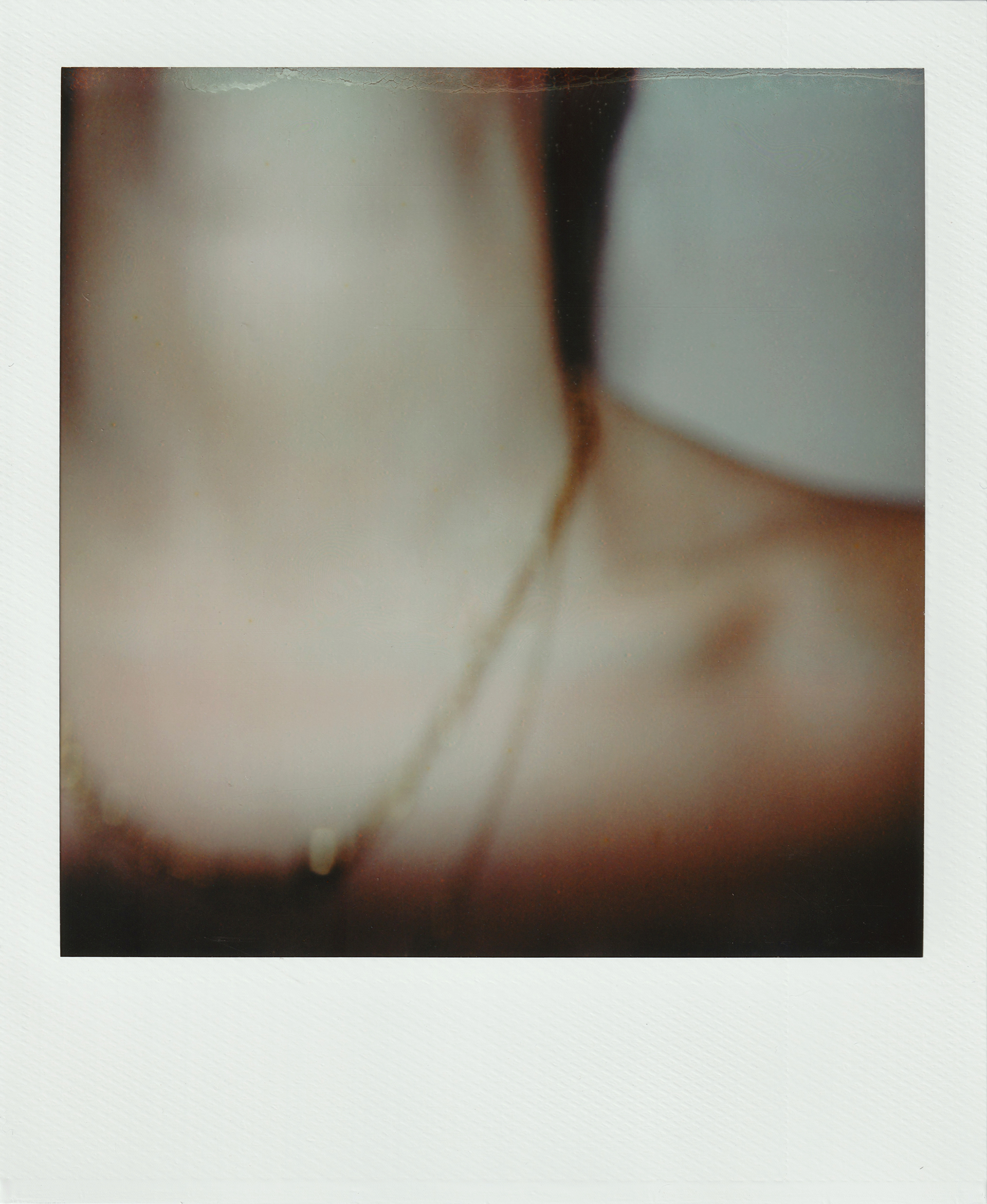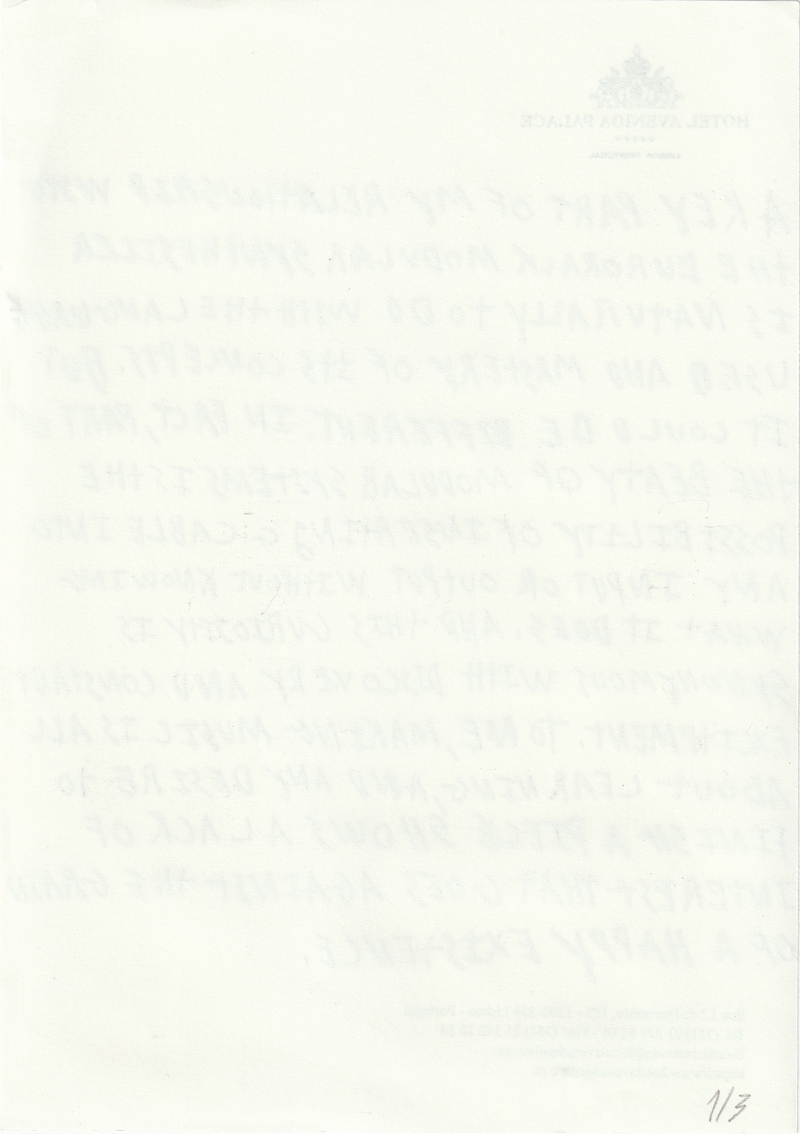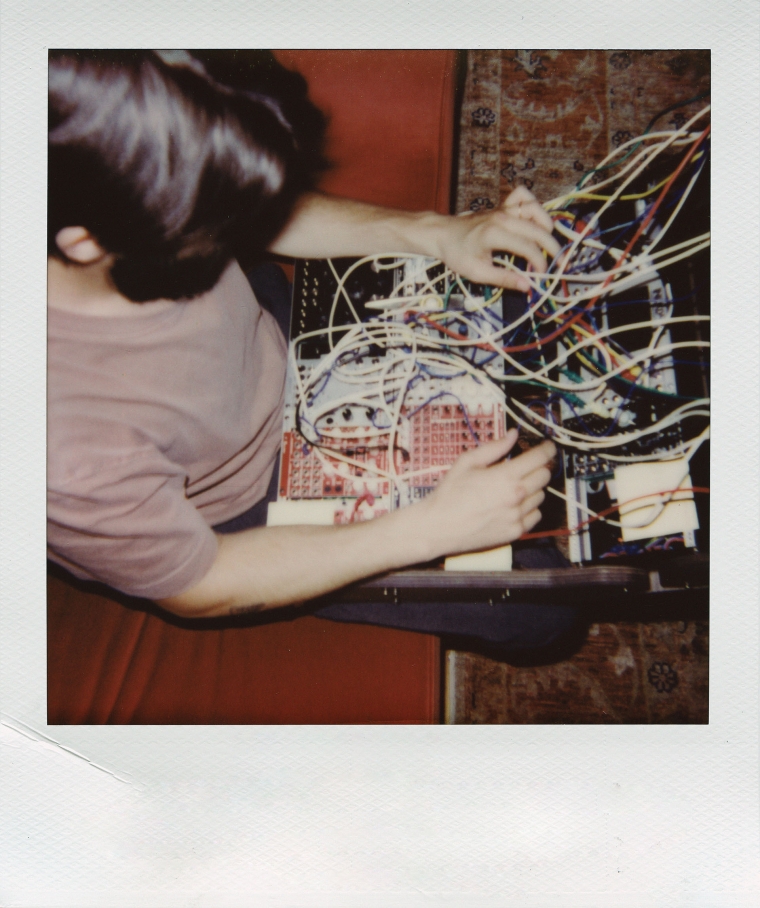Doppelgänger (with Carminho and Harry Partch)
by João Pimenta Gomes
From his Clouds project in Berlin
I started recording Doppelgänger (with Carminho and Harry Partch) in November 2019 at the Wyndham Hotel in New York during the first days of Carminho’s tour. The vocals and final take were recorded in the hotel room on 1–4 November.
Every sound was created by Carminho singing the Harry Partch scale note by note using different “articulations” (aaaahs, taaaaas, eeeehs, etc.). I broke all of the notes down individually and it left me with a kit of one-shots that I used for this piece.
For the recording, I connected the modular synthesiser directly to the Portastudio and created the master in mono. It was important to do only a few takes, as at the time I wanted to capture the energy and spirit of recordings from the 50s and 60s, which I always imagined came from the fact that musicians then only had the chance to do one or two takes.
I was studying the work of the producer Joe Meek and I was really inspired by the idea of the recording studio as an instrument. My Eurorack setup explored this relationship between re-amping ideas, axis and off axis recording and how to translate and apply these techniques through the synthesiser, exploring volume as the starting point to modulate the timbre of the sounds and my spatial perception of stereo in terms of proximity and distance. I think recording music quickly is what most enhances it, what really brings it alive. I made some basic musical scores, something I could memorise after a few rehearsals, to use as a guide. The idea of drone music doesn’t really interest me. What I look for is an evasive sound – something wild that’s hard to tame. Before these recordings, I had rarely done a take where I felt I had influenced the sound rather than just satisfying a preconceived idea about structure or energy.
It was also important to follow this constant flow of energy from start to finish, as the modulations move from within the music outwards; to try to ignore my thoughts and to let the body respond to the sound in the aim of capturing that moment. I didn’t do an overdub and the mixing took place in the days after the recording.
My relationship with the synthesiser is chiefly about sound processing rather than creation. I feel it’s the natural extension of my work as a music producer, something I explore when I record a band in a particular space, as that space between the musicians mutates and is transformed by the collision and accumulation of sound waves in a room. It is the process of sound in its entirety and not as a relationship between the execution and the result. I’ve always thought it was really important that everything – instruments, people, speakers, signal path, atmosphere, microphones and tape recorder – should have the same importance and that managing these elements in a song should be a dynamic process.
My favourite records at the time:
The Velvet Underground – Loaded, 1970
George Harrison – All Things Must Pass, 1970
Cat Stevens – Tea for the Tillerman, 1970
Depeche Mode – Violator, 1990
Captain Beefheart – Lick My Decals Off, Baby, 1970
Syd Barrett – Barrett, 1970
Fugazi – Red Medicine, 1995
Bill Evans – Moon Beams, 1962
Sonny Sharrock – Black Woman, 1969
David Bowie – Scary Monsters, 1980
John Lennon – Plastic Ono Band, 1970
— João Pimenta Gomes, 20 October 2021
|
João Pimenta Gomes is a visual artist and musician based in Lisbon and trained in sound and music production, drawing and photography. In 2021, he presented Trabalho de Inverno with Pedro Tropa and Teresa Santos (Galeria Quadrado Azul, Lisbon), and in 2020 he had a solo show entitled Micro Ressonâncias (Appleton Box, Lisbon). He’s the author of “Canto”, a sound piece created by Marilá Dardot for her exhibition Interdito (Galeria Filomena Soares, Lisbon, 2017). |
Clouds is a sound composition and installation specifically created by João Pimenta Gomes for a space in Berlin, the Kunstraum Botschaft (16/09–29/10/2021). The sound composition is based on a sequence of existing rhythms, recordings and samples, that are constructed and deconstructed and like they are following a score, which is only known by the author. It is a work about music and its infinite possibilities and mutations in space. The sound installation is accompanied by a set of performances. |

On top: Instant film by João Pimenta Gomes.
Below: “Doppelgänger (with Carminho and Harry Partch)”, 2021, by João Pimenta Gomes.







